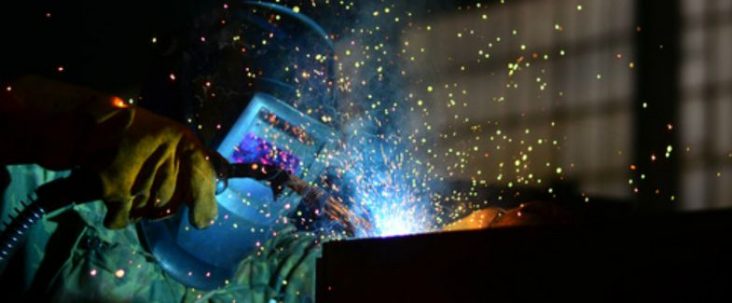Fort Smith Chamber to add $500,000 for regional workforce development
by December 10, 2018 6:05 pm 1,551 views

A workforce development initiative in Fort Smith will get added leverage through the Fort Smith Chamber of Commerce with the addition of a vice president and an additional $500,000 dedicated to workforce training after the first of the year.
The vice president of workforce development position is made possible thanks to $1.3 million in grants to be shared by the Fort Smith Chamber and the Northwest Arkansas Council for the purpose of hiring people to coordinate workforce training and business education partnerships in the region.
Tim Allen, the Fort Smith Chamber of Commerce president and CEO, said a nationwide search is underway “for that right person … who has that blend of education and business experience, and can build those (coalitions) to get this done.” He thinks the position will be filled by the end of the first quarter 2019.
Allen tells Talk Business & Politics the coordinator will be a chamber employee and will work to better connect regional workforce programs in place, expand them where possible, and encourage adoption of training programs successful in other metro areas. Advanced manufacturing, health care and information technology were mentioned by the Walton Family Foundation as key areas to develop in the Fort Smith metro.
Workforce development is vital in order to increase the pool of skilled workers in the Fort Smith MSA, which is needed to attract more industry to the region, Allen said.
“When I came here (to the Fort Smith Chamber of Commerce) seven years ago, we were at about 10% unemployment rate. There was a large pool of people looking for work with a strong skills set,” Allen said. “We landed some large projects. … Here we are now at below 4% unemployment. The labor pool is much smaller.”
In order to sell the Fort Smith area to perspective business and industry, the labor pool needs to deepen, which is where workforce development plays a key role, leaders said.
“Workforce development is two-fold. One, current employees need to be trained with new abilities and reskilled. And two, we also realize we need access to a robust pipeline of technically skilled talent,” said Jason Green, vice-president of human resources at ABB/Baldor.
A millage increase for Fort Smith Public Schools, which was passed in an election in May, will fund among other things, a Career and Technology Center for the school district.
Green was one of the area business leaders behind the millage push and has said improving workforce skills and encouraging more students to engage in the trades is vital for the region’s economy.
The University of Arkansas at Fort Smith’s Western Arkansas Technical Center is another component in the workforce development initiative.
The university said last week they were working on a rebrand of WATC that would include looking at which, if any, programs should be added that would help students benefit more area businesses.
Along with the low unemployment rate, industry also had to contend with an older, skilled talent pool who will soon be aging out of the workforce, Green said.
“We’ve got to be ready from a succession perspective as they transition into that next phase of their career and their life as they retire from the company, that we’ve got skilled middle career folks ready to fill the role, but we’ve also got skilled younger talent ready to fill that pipeline,” Green said.
This new workforce development initiative will have business and industry, the chamber, Fort Smith Public Schools, UAFS and all the other area schools working together to rethink education and adapt courses in order to fill the supply of workers needed.
“It takes all of us working together and headed in the right direction, the same direction, to make this successful and to benefit our community, our business and industry and especially our kids. We will change lives as a result of this effort, and our kids will be able to walk across the stage at graduation with two things: A viable career plan and relevant skill sets,” Green said.
This initiative will also benefit the entire state of Arkansas, Allen and Green agreed.
“The model we are building is replicable, but it really starts with those partnerships,” Green said.
And it is key to attracting more industry to the region, Allen said.
“It is a comprehensive, holistic model,” Allen said. “There is not another community around taking this approach. … It is designed to connect from beginning to end.”
The new VP position will bring all of the components together, working closely with UAFS, FSPS and area industry, to fill short- and long-term goals as well as determine the next steps, Allen said.
One of those next steps will be to build Fort Smith into a more desirable city that keeps its young people here in order to grow the talent pool of the city.
“That’s where all those quality of life initiatives that are happening in Fort Smith as we speak will play an important role,” Green said.
All these combined efforts will ultimately grow the economy in Fort Smith, Allen said.
“The recruitment of human capital is key to the future. It just is. And every community in this state, every community in this country is angling and fighting for the same pool of people,” Allen said.
“Communities that figure out how to build a workforce capacity will win economic development. That is fact. We think we’re on our way,” he added.
FORT SMITH METRO UNEMPLOYMENT RATE
3.5% Oct. 2018 (latest available)
4.8% Jan. 2018
4.6% Jan. 2017
5.3% Jan. 2016
6.1% Jan. 2015
7.3% Jan. 2014
9.1% Jan. 2013
8.6% Jan. 2012
10.0% Jan. 2011
9.5% Jan. 2010
8.3% Jan. 2009
5.4% Jan. 2008
Source: U.S. Labor Department, Bureau of Labor Statistics
